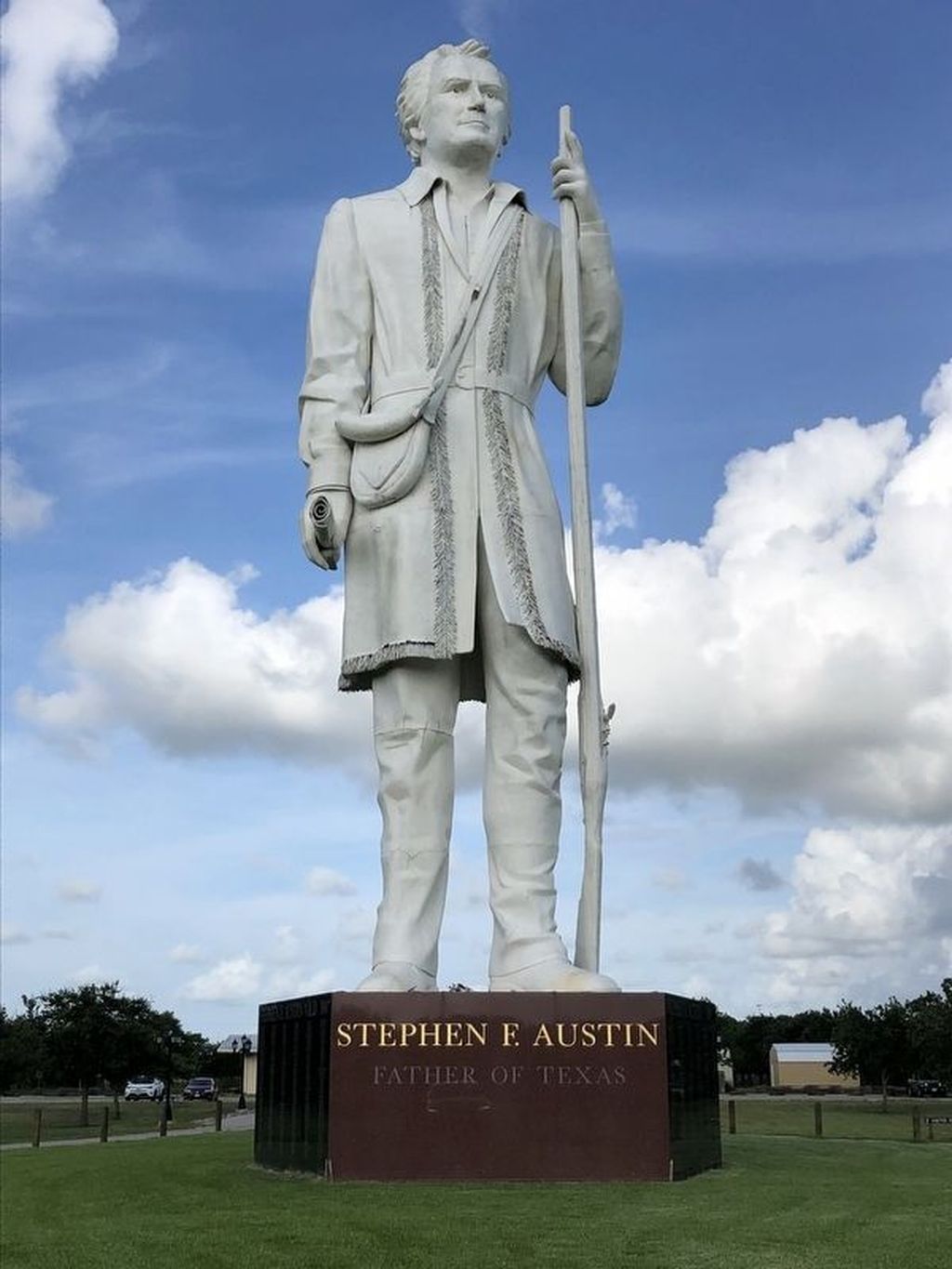Texas’s rich history is deeply intertwined with the legacies of its influential figures. To honor their contributions, the state has erected numerous monuments and memorials that serve both as tributes and educational tools. This article explores significant monuments dedicated to Texas’s historical figures and the ongoing efforts to preserve these landmarks.
The Alamo Cenotaph
Source: By Loadmaster (David R. Tribble)
Located in San Antonio, the Alamo Cenotaph stands as a tribute to the defenders of the Alamo who fell during the 1836 battle. Erected in 1939, this monument features sculpted images of key figures like James Bowie and William B. Travis, ensuring their sacrifices are remembered.
Stephen F. Austin Statue
Source: by Chris Kneupper
Known as the “Father of Texas,” Stephen F. Austin’s contributions are honored with a 67-foot statue in Angleton. Unveiled in 2006, this towering figure celebrates Austin’s role in establishing the first Anglo-American colony in Texas.
Sam Houston Monument
In Houston’s Hermann Park, the Sam Houston Monument, dedicated in 1925, depicts the general on horseback, symbolizing his leadership during the Texas Revolution and his tenure as the first president of the Republic of Texas.
Texas African American History Memorial
Unveiled in 2016 on the Texas State Capitol grounds in Austin, this memorial honors the contributions of African Americans to the state’s history. The 27-foot high, 32-foot wide monument depicts Juneteenth – June 19, 1865 – when hundreds of Union troops arrived in Texas and announced the freedom of slaves in the U.S., along with major social, political and cultural icons in the state from years later.
Tejano Monument
Also situated on the Capitol grounds, the Tejano Monument, unveiled in 2012, recognizes the contributions of Spanish and Mexican explorers and settlers to Texas’s development. This granite and bronze sculpture features figures representing Tejano families and their cultural heritage.
Preservation Efforts
Organizations like the Texas Historical Commission play a vital role in preserving these monuments. Through programs such as the Historical Markers initiative, they ensure that the stories of Texas’s historical figures remain accessible to the public.
Conclusion
Monuments and memorials across Texas serve as enduring tributes to the individuals who shaped the state’s history. By preserving these structures, Texans honor their heritage and educate future generations about the pivotal figures who contributed to the state’s rich legacy.
Q&A: Understanding Texas’s Historical Monuments
Q: What is the significance of the Alamo Cenotaph?
A: The Alamo Cenotaph, located in San Antonio, commemorates the defenders who perished during the 1836 Battle of the Alamo. Erected in 1939, it features sculpted images of key figures like James Bowie and William B. Travis, ensuring their sacrifices are remembered.
Q: Who is honored by the Stephen F. Austin Statue, and where is it located?
A: The Stephen F. Austin Statue, standing 67 feet tall in Angleton, honors Stephen F. Austin, known as the “Father of Texas.” Unveiled in 2006, it celebrates his role in establishing the first Anglo-American colony in Texas.
Q: What does the Texas African American History Memorial represent?
A: Unveiled in 2016 on the Texas State Capitol grounds in Austin, this memorial honors the contributions of African Americans to the state’s history. The 27-foot high, 32-foot wide monument depicts Juneteenth – June 19, 1865 – when hundreds of Union troops arrived in Texas and announced the freedom of slaves in the U.S., along with major social, political and cultural icons in the state from years later.
Q: How does the Texas Historical Commission contribute to preserving these monuments?
A: The Texas Historical Commission plays a vital role in preserving these monuments through programs such as the Historical Markers initiative, ensuring that the stories of Texas’s historical figures remain accessible to the public.
By understanding and preserving these monuments, we honor the individuals who shaped Texas’s history and educate future generations about their enduring legacies.
